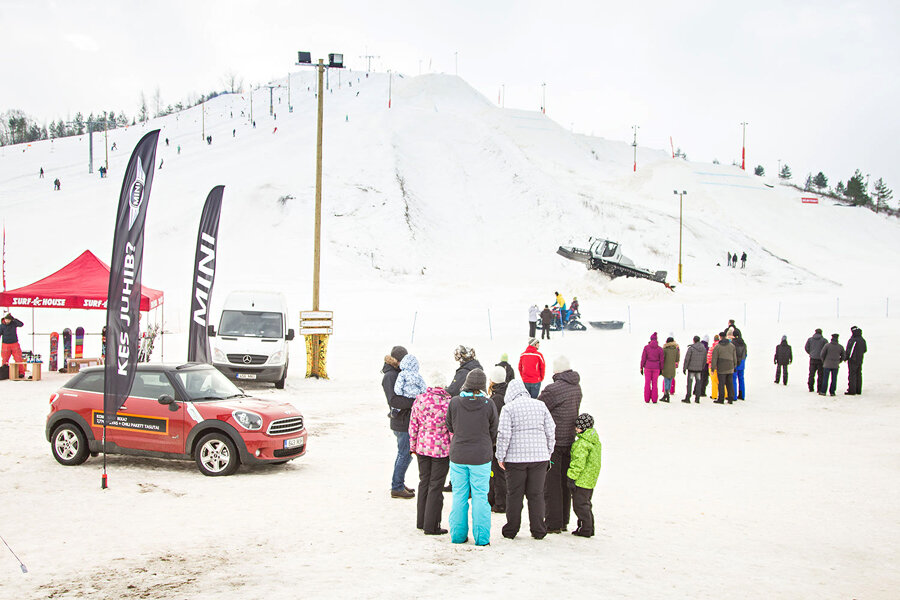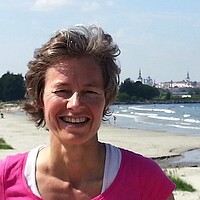How an Estonian ash hill became a ski resort
Loading...
| Kivioli, Estonia
Estonia is a very flat country. So I found it strange that while, on a recent tour of Estonia's industrial northeastern tip near the Russian border, I came across a big hill.
"Estonia's 'Alps,'" joked Ago Gaskov, the reporter who was acting as my Russian translator and guide. This, he said, is the Ash Hill, one of the country's many artificial hills, made up of what's left when oil shale, a sedimentary rock that is abundant here, is processed into power or oil.
No other country uses oil shale as actively as this tiny Baltic nation, which relies on the rock to light the homes of its 1.3 million residents. But it's dirty. Half of the 18 million tons of rock mined every year ends as waste material. The waste is heaped into scores of hills, which pockmark Estonia's northeastern Ida-Viru region, a testimony to the oil shale industry's dark side.
But the Kivioli Ash Hill is different. Thanks to the entrepreneurial grit of a marketing student from Tallinn, the Estonian capital, the Ash Hill – now home to the Kivioli Adventure Center ski and motocross resort – is the hot place to go.
In Estonian, Kivioli means “Rock Oil.” The town was born in 1922 with the opening of one of Estonia's first shale refineries. It boomed when the combustible oil fed the Soviet empire, and shrank when the Soviet Union dissolved.
The hill consists of some 6 million tons of semi coke deposited from the Kivioli oil shale refinery between 1928 and 1967. Semi coke is considered dangerous: It contains organic flammable elements that can burn.
Now, with only 5,800 people left, down from 14,000 in the 1980s, Kivioli was on its way to becoming a Soviet ghost town.
Janek Maar first had an inkling to turn the Ash Hill into something more when he was hanging out in the region 13 years ago, after graduating from Tallinn Technical University. “There was nothing to do,” he recalls. “The only thing to do was climb up the old ash hill and snowboard all the way down.”
The 400-meter slide down took 20 seconds. The hike up the hill was a bit more strenuous. So, he thought, why not install ski lifts?
Mr. Maar met Kivioli native Kaja Kreisman, then a local councilor, to discuss the idea. Having grown up in the shadow of the Hill, Ms. Kreisman knew that oil shale processing had contaminated the local Purtse River, killing the salmon that had once fueled the town's fishing industry. She'd seen how the industry's decline had turned the once bustling town center into a urban desert, forcing young people to leave in droves.
“I knew from the start the idea [of a ski resort] would bring young people back,” says Kreisman.
It took 13 years, 6 million euros, and myriad geological and environmental surveys for authorities to declare the place safe for people to ski on.
“We had to seal all the area with 20,000 cubic meters of natural earth,” recalls Maar, who heads the foundation running the Kivioli Adventure Center. Then it took another few years to build a conference center and 30-bed hotel. The EU, Estonia's government, and business groups all pitched in.
Now a welcome source of jobs – some 30 people work there – the center has proven remarkably popular both with locals and tourists. "At long last," says Kreisman, "the negative image Kivioli residents had of their town has changed.”
This winter, Tourest, the Baltic region's biggest tourism fair, named the old Ash Hill "Best Promoter of Tourism." And in August, 5,000 motocross enthusiasts from 15 countries will converge on tiny Kivioli to ride down the slopes of the old Ash Hill in Estonia's first world motocross championship.
The center's success has invigorated a drive around the country to reuse oil shale waste. Some hills are being planted. One became a turbine park.
“The amount of oil shale waste is enormous and we don't know what to do with it,” says energy expert Andres Mäe. “If it's possible to put it to the service of society and the community, and to commercialize it, it's very good.”








